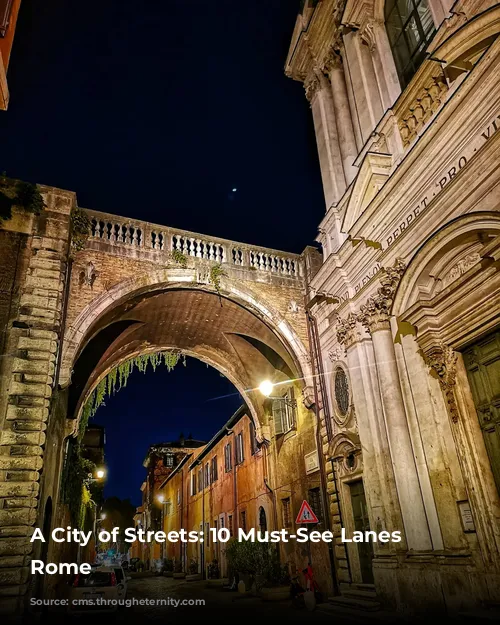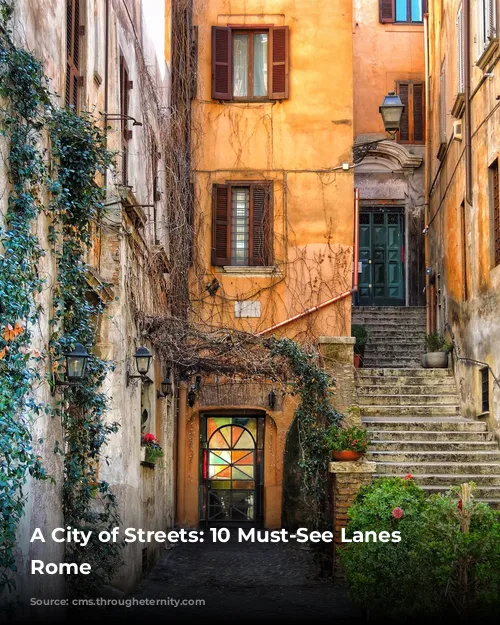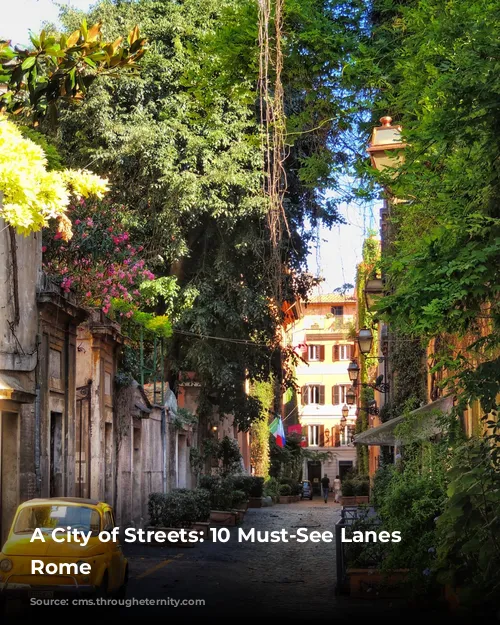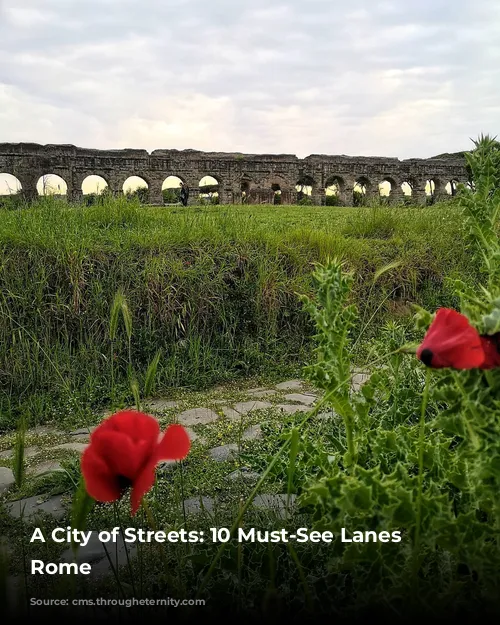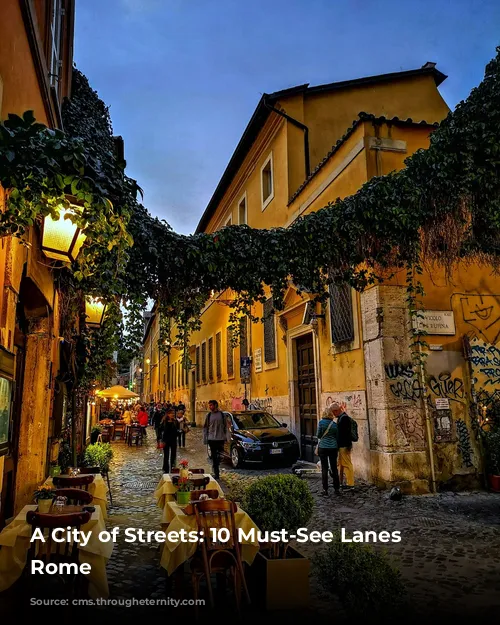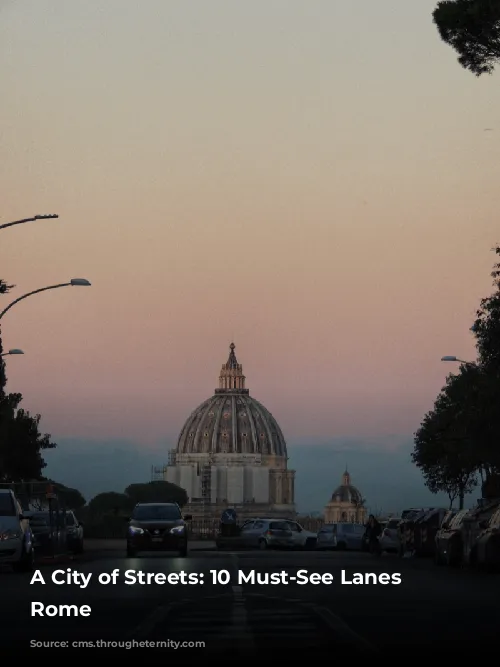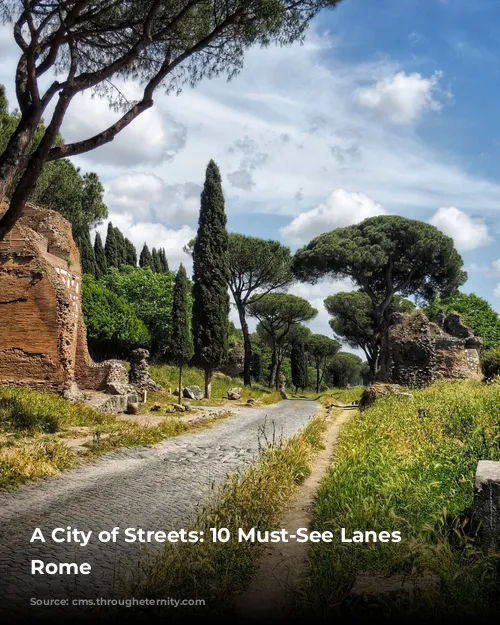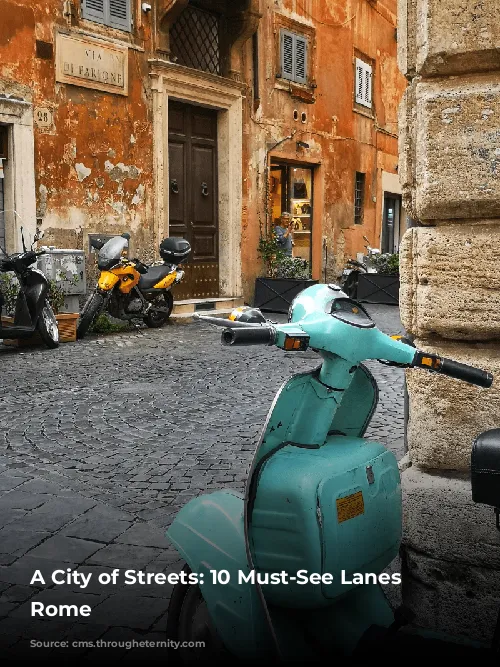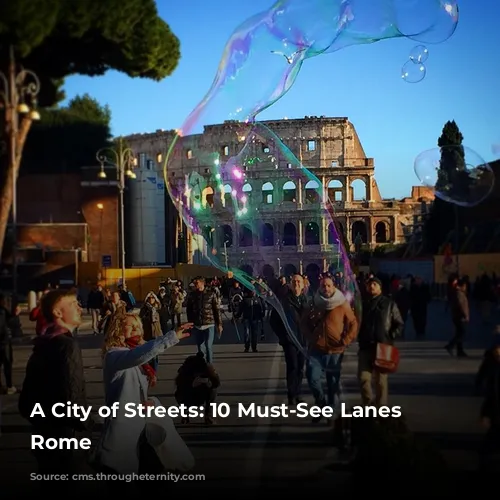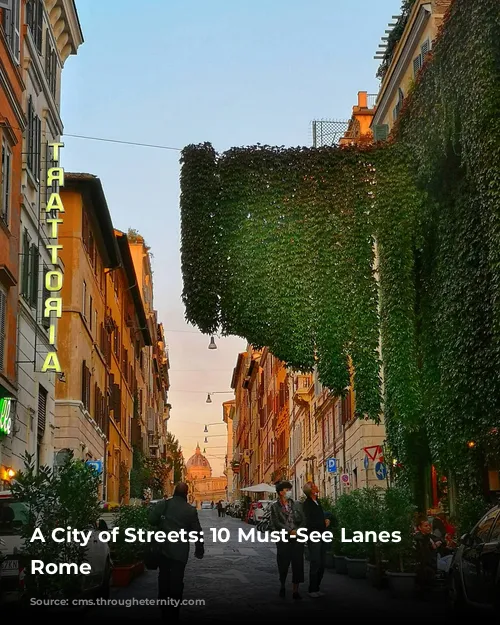Rome, the “Eternal City”, is known for its breathtaking churches, museums, and archaeological sites. But the real beauty lies in its streets. This week, we’re exploring ten of our favorite Roman thoroughfares, each with its own unique history and charm.
Renaissance Charm: Via dei Coronari
Hidden within the enchanting maze of streets surrounding Piazza Navona, you’ll find Via dei Coronari, a true gem. This straight road, designed by Pope Sixtus IV in the late 1400s, was the first Renaissance street to pierce through Rome’s medieval heart. It was also a crucial route leading out of the city towards the Vatican, traversed by countless pilgrims seeking solace in the holiest church in Christendom.
Via dei Coronari, named for the rosary beads sold by street vendors to the faithful, saw a bustling mix of piety and commerce. However, its elegance also attracted the attention of some of the Renaissance’s most famous courtesans, like Fiametta Michaelis and Tullia d’ Aragona.
Today, this street is home to antique dealers, art studios, and some of the city’s finest gelato.
Artistic Legacy: Via Margutta
Just off the bustling Via del Corso, you’ll discover the hidden gem of Via Margutta. This elegant cobbled lane, once home to the legendary director Federico Fellini, has for centuries attracted expatriate artists, who found refuge in the Eternal City.
This “Street of Artists” earned its name in 1612 when the renowned Baroque painter Orazio Gentileschi established his workshop here. The Fountain of the Artists, installed in 1927, celebrates this heritage with easels, compasses, and antique masks.
Today, Via Margutta boasts luxury hotels, boutiques, and artist studios, inviting you to step back in time and breathe in the atmosphere of centuries past.
Renaissance Splendor: Via Giulia
Designed by the renowned architect Donato Bramante in the early 16th century, Via Giulia embodies the Renaissance spirit. This traffic-free street, lined with palaces and churches, meanders through the heart of one of Rome’s most charming neighborhoods.
A graceful ivy-covered bridge adds to the street’s charm, a remnant of Michelangelo’s grand plan to link the Palazzo Farnese to the Villa Farnesina across the river. While the grand design never materialized, the bridge, known as the Arco Farnese, provides a perfect vantage point for enjoying the vibrant street life.
The Heart of Trastevere: Via della Lungaretta
Trastevere, Rome’s most vibrant neighborhood, is a labyrinth of cobbled alleys and piazzas brimming with art, culture, and nightlife.
The heart of Trastevere beats on Via della Lungaretta, stretching from Piazza della Piscinula to Piazza di Santa Maria in Trastevere. While the street’s current appearance is a product of Pope Julius II’s Renaissance renovations, its roots stretch back to antiquity. This route once followed the Via Aurelia Nova, a Roman road leading to the Janiculum hill.
Today, Via della Lungaretta is a lively hub of bars and restaurants, echoing the energy of its ancient past.
The Queen of Roads: Appian Way
The Appian Way, or Via Appia in Italian, is a majestic ancient Roman road, a true “Queen of Roads”. Constructed in the 4th century AD, it extended from Rome all the way to Brindisi in Puglia.
A stroll along its well-preserved Roman flagstones is a journey through time, lined with ruined villas, funerary monuments, and ancient pines. Escape the modern world and let your mind wander through the generations who have walked this path.
Ancient Legacy: Via Latina
Hidden in the shadow of the Claudian aqueduct, a hidden stretch of the ancient Via Latina whispers tales of a forgotten past. This Roman road, while less famous than the Appian Way, was equally important in antiquity, connecting Rome to the city of Benevento over 200 kilometers south.
First paved in the 4th century BC, it facilitated the movement of Roman legions during the Samnite Wars. Next time you’re exploring Parco degli Acquedotti, be sure to seek out this intriguing relic of ancient history.
St. Peter’s Majesty: Via di Porta Cavalleggeri
This peaceful street, nestled in a residential area west of the Vatican, offers a captivating view of St. Peter’s Basilica. Michelangelo’s architectural masterpiece seems to hover just beyond reach, creating an optical illusion that draws you closer as you walk.
The street’s unique perspective, shifting your perception of the Basilica’s dome, adds to its captivating charm.
The Heart of the City: Via del Governo Vecchio
Via del Governo Vecchio, a central artery of Rome, boasts an eclectic mix of attractions. Elegant palaces line this cobbled street, leading west from Piazza Navona towards the Tiber River. Along its path, you’ll find some of the city’s most vibrant wine bars, vintage shops, and boutiques.
Stop for a pre-dinner glass of wine at Il Piccolo, or indulge in a traditional meal at Da Tonino, a timeless trattoria. At the street’s eastern end, the Pasquino statue, known for its witty remarks, observes the hustle and bustle of the city.
Monti’s Beauty: Via Panisperna
The Monti quarter, once Rome’s most notorious slum, is now a charming haven of picture-perfect streets and piazzas.
Via Panisperna, a picturesque street in Monti, offers a glimpse into the area’s captivating history and artistic soul. Creeping vines frame the street as it winds towards the majestic Santa Maria Maggiore.
Beyond its beauty, Via Panisperna holds a scientific legacy. It was here that the Nobel Prize-winning physicist Enrico Fermi and his team made a groundbreaking discovery in 1934, ushering in the nuclear age.
Imperial Glory: Via dei Fori Imperiali
Via dei Fori Imperiali, a grand boulevard that cuts through the heart of ancient Rome, was the brainchild of Benito Mussolini, who envisioned a connection between the fascist regime and the glory of the past.
While its origins are rooted in an act of urban transformation, a walk down this pedestrianized street is a truly captivating experience. The street links Piazza Venezia to the Colosseum, showcasing the Imperial Fora, Trajan’s Market, and the Roman Forum on either side.
Rome’s streets are more than just avenues of passage; they are living canvases of history, art, and culture. Whether you’re seeking Renaissance charm, artistic legacy, or ancient grandeur, Rome’s streets offer a unique journey through time.
